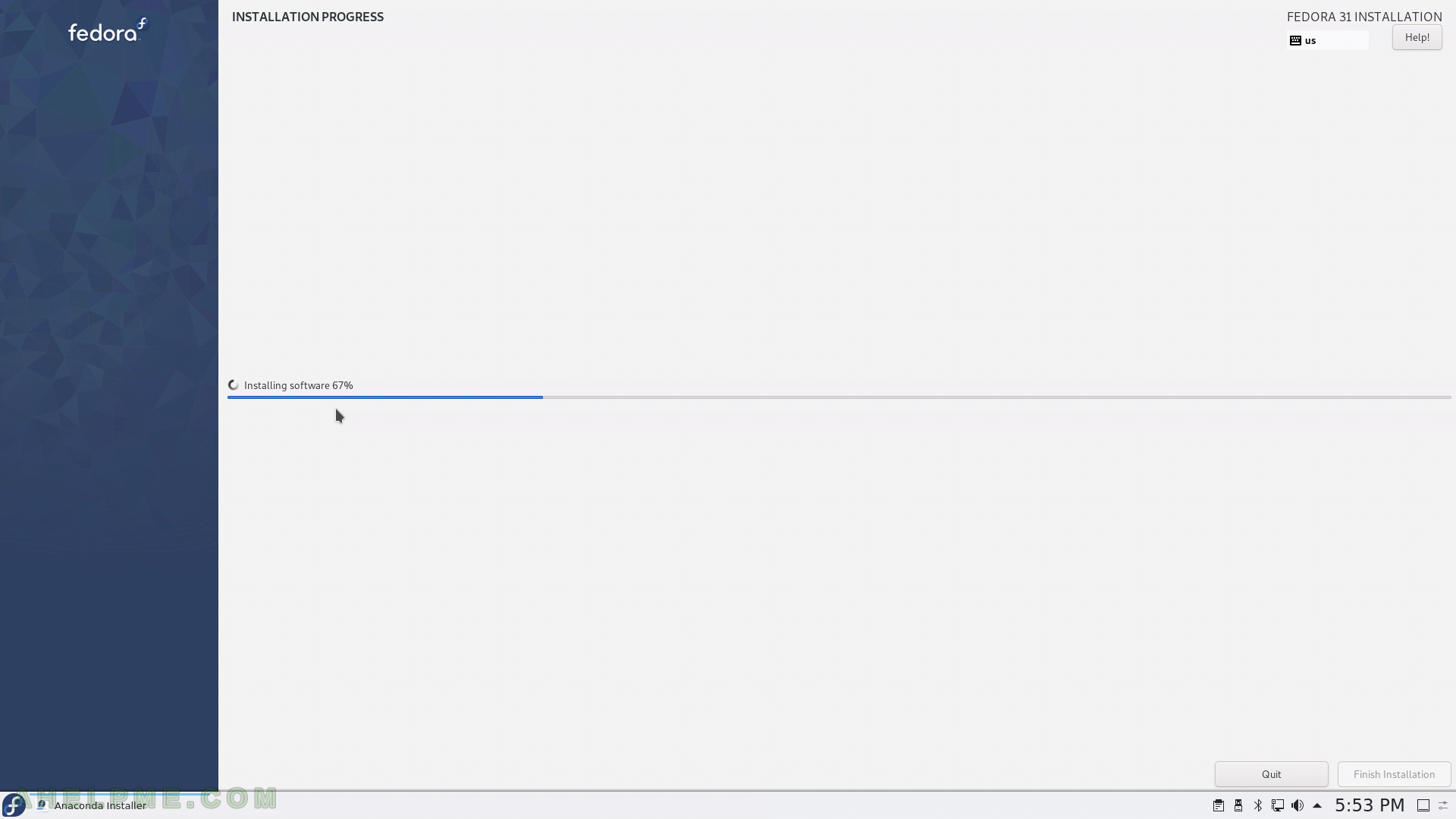SCREENSHOT 11) Installation destination – choose your disk to install Fedora 31.
Ensure the automatic storage configuration is selected. This might erase all of the data on the disk and will install a clean copy with default disk layout. If you do not have enough space on the selected disk, the setup will ask you to erase the data on the disk (next few steps will show your the setup). If the disk is blank it will not ask you anything. If you want a specific installation you should choose “Custom” or “Advanced Custom(Blivet-GUI)” (these options are beoynd the scope of this article). Click on “Done” – no confirmation will be asked.
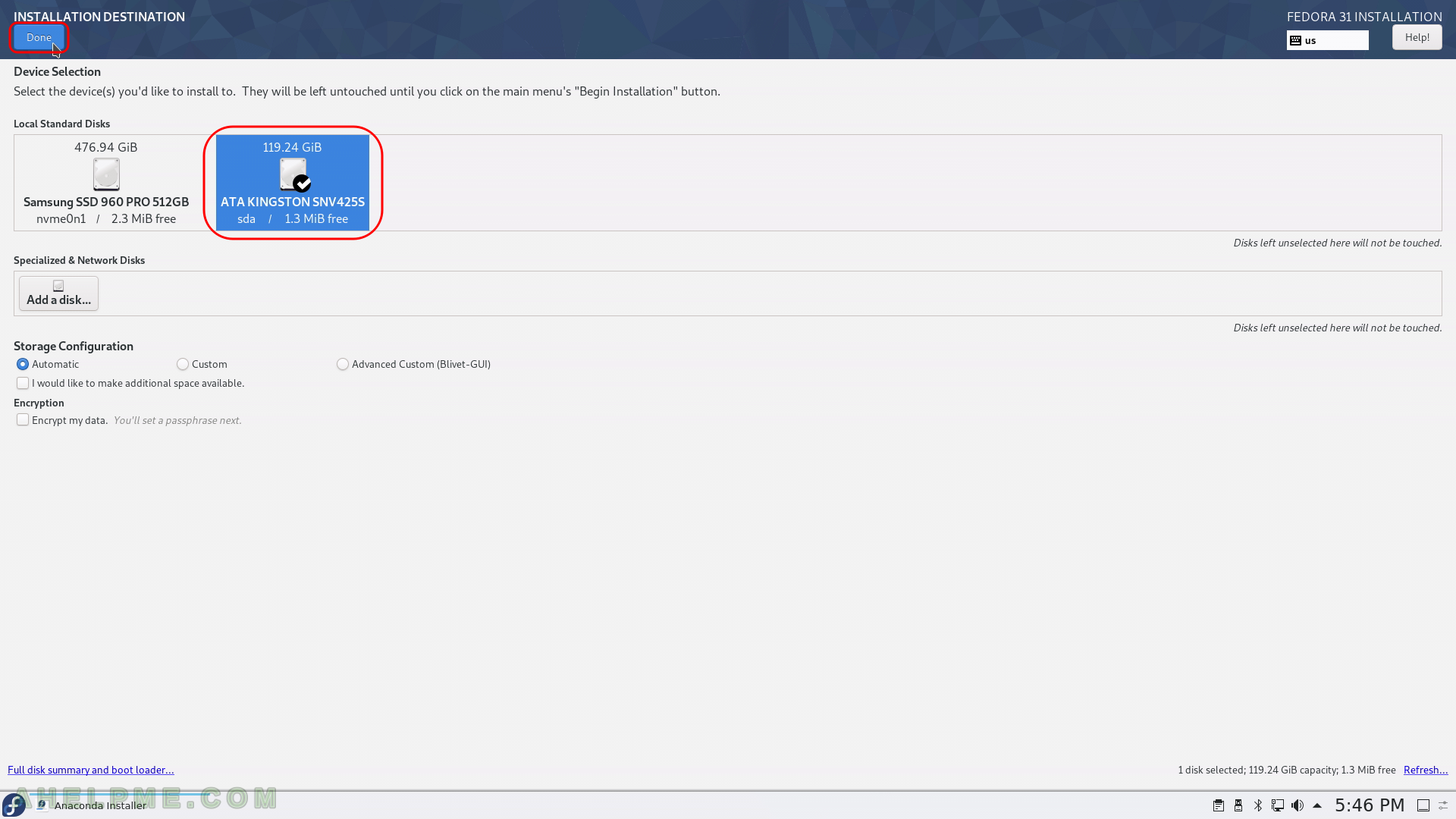
SCREENSHOT 12) Fedora 31 KDE Plasma Desktop needs 20.91 GiB of available space on the selected disk at least!
If there is below the requested size of free (available disk) space the setup will offer you to free some space by removing existing data (partitions). If the selected disk is with important data and you do not know what you are doing, stop and don’t continue! If this hard drive is with no important data you may proceed by clickin on “Reclaim space”.
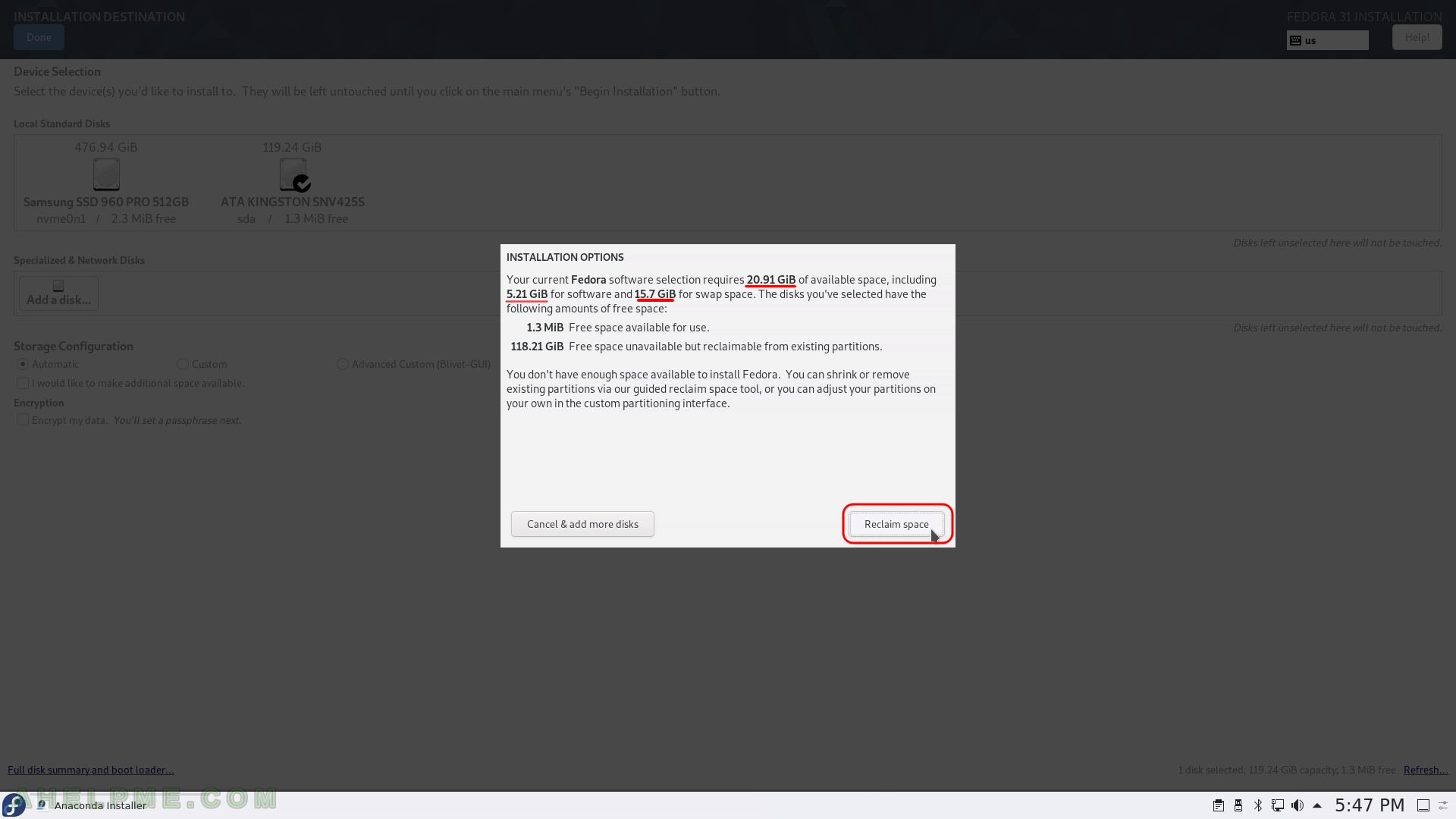
SCREENSHOT 13) Delete all of the data is the easiest way when you have unnecessary data in the disk and you decided to remove all the data from the disk.
Click on “Delete all” if this is the case. Be careful not to remove something you might need in the future! If you know what you are doing you can free some space (make it available i.e. enough unpartitioned space (~21 GiB at least), which is what the setup needs to proceed) by deleting or shrinking the existing partitions.

SCREENSHOT 14) Click on “Reclaim space” to confirm the operation in the previous step – deleting or shrinking of partitions.
You can see the operations the “Action” column, which will be performed on the selected disk after the installation setup begin its actual work. In our case we wanted to delete all data on the disk, so there are two Delete actions pending…
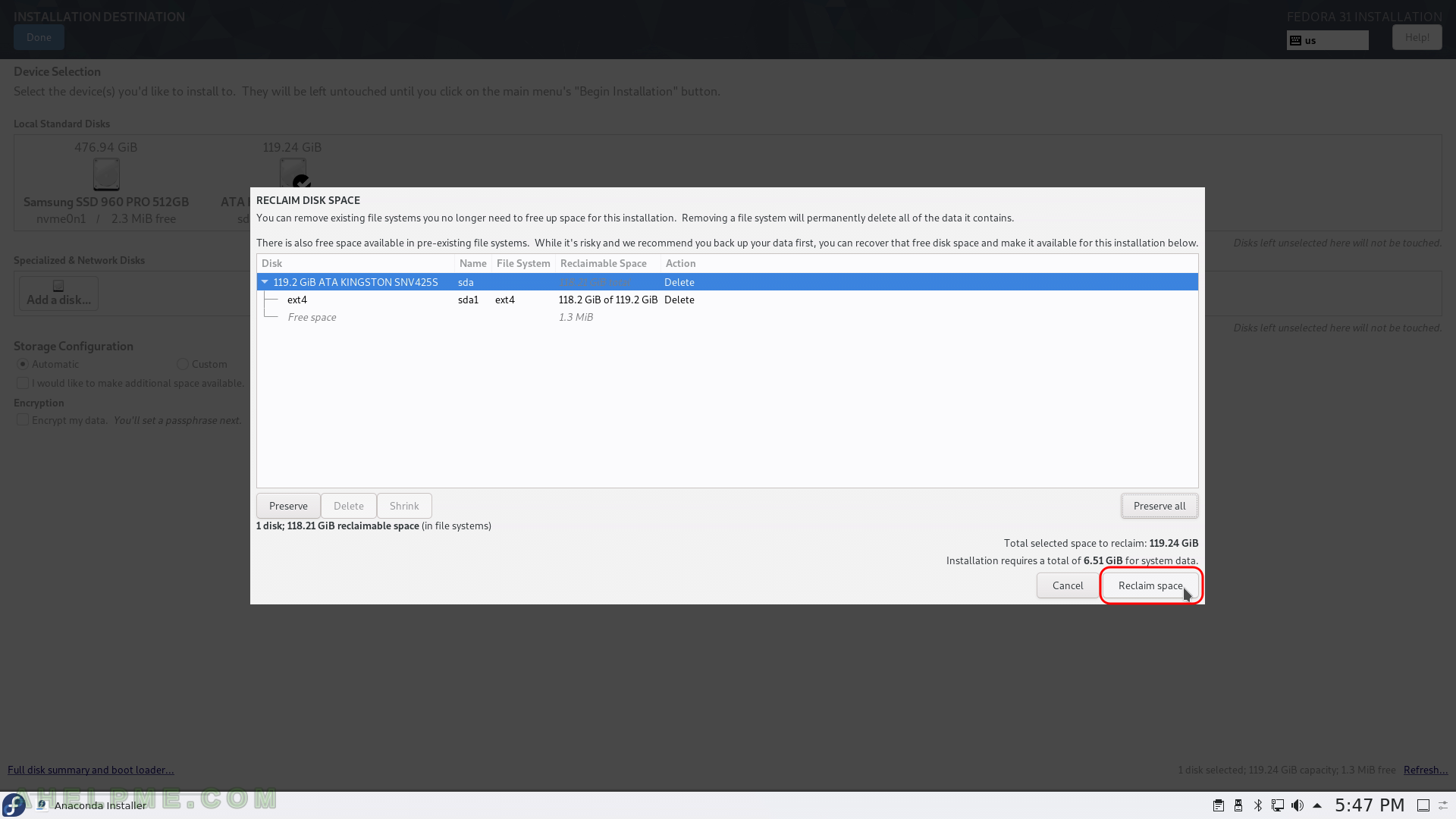
SCREENSHOT 15) Click on “Root Password” if you want to be able to log in as root by activating the root user.

SCREENSHOT 16) Set the root password and confirm it.
By default, no root login is permitted using ssh server, but this could be changed here by checking “Allow root SSH login with password”. You might want to use it.
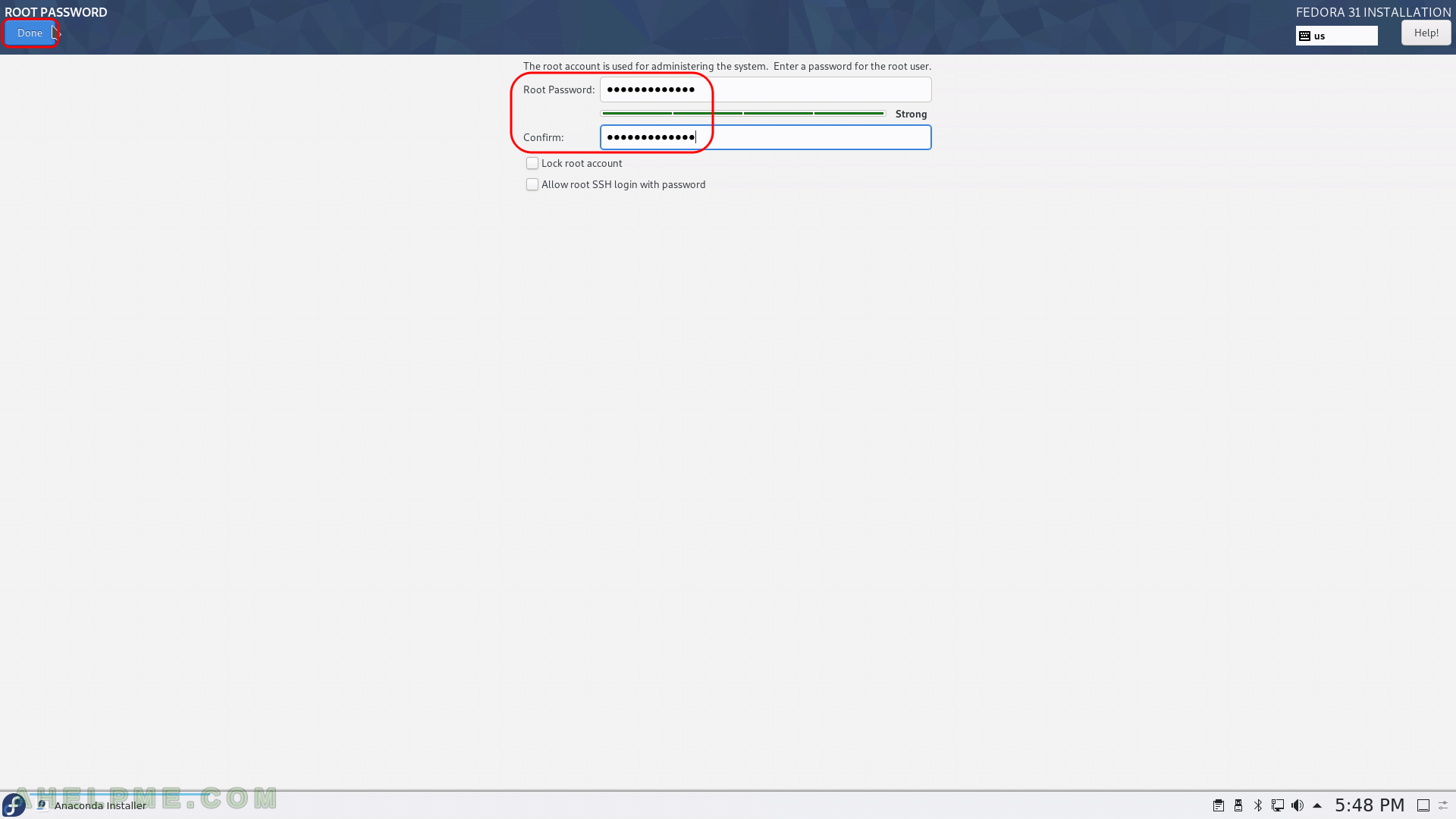
SCREENSHOT 17) Click on “User Creation” – create an ordinary user.
This is a desktop setup you need an ordinary user to use the system.

SCREENSHOT 18) Create an user and check “make this user administrator” to be able to escalate user privileges when you need to aministrate the system.
Fill the name and the password according.

SCREENSHOT 19) Now the installation setup is configured and by clicking on “Begin Installation” the actual installation on your selected hard drive begins.
The actual installation begins and first the disk must be prepared, so after clicking the very button the disk layout will be changed according to the “Installation destination” steps.

SCREENSHOT 20) The setup is still working… Installation progress is at 67%.
